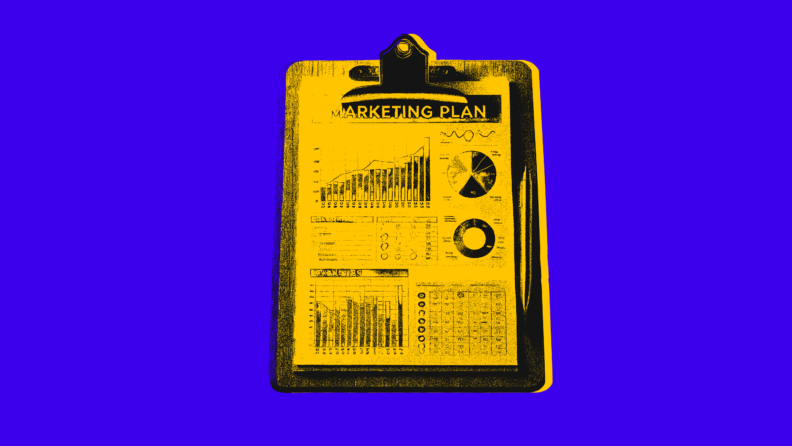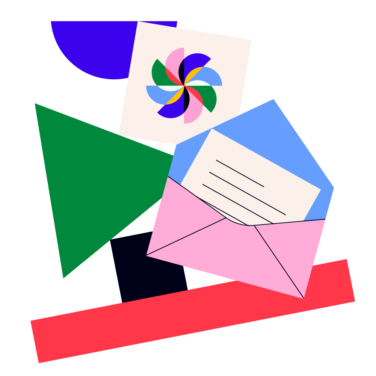Omnichannel marketing creates a seamless, integrated customer experience across all channels. Think of it as one continuous conversation, whether someone’s browsing your site, reading an email, or chatting with sales. Multichannel, on the other hand, means you’re present on multiple platforms (email, social, ads, etc.), but each one might operate in its own lane, with less coordination.
Understanding how these strategies differ and what that means for your business can seriously shape how you build campaigns, allocate budget, and drive results.
In this article, I'll break down omnichannel and multichannel in plain English. No fancy jargon, no convoluted explanations—just straightforward info to help you make sense of it all.
What Is Omnichannel Marketing?
Omnichannel marketing is a customer-centric approach that creates a consistent, unified experience across all touchpoints. It's like having a smooth, unbroken conversation with your customers, no matter where they interact with your brand, whether it’s through digital marketing, your online store, or in-person interactions.
Here's what makes it tick:
- Channel Integration: All channels work together, sharing data and insights across your ecosystem.
- Brand Consistency: Your brand message and customer interactions stay the same everywhere.
- Personalized Messaging: Tailored messaging based on customer behavior, needs, and past actions.
Omnichannel aligns with evolving customer expectations: fluidity between devices, platforms, and conversations.
To make omnichannel work, SaaS brands often rely on:
- A centralized customer data platform
- Cross-functional team alignment
- Automation to enable personalized touchpoints
- A tightly integrated tech stack
When done right, an omni strategy strengthens customer engagement, boosts retention, and delivers a frictionless user experience that feels like magic… even though it's backed by a lot of operational rigor!
What Is Multichannel Marketing?
Multichannel marketing is like throwing a wide net: you show up in a lot of places, but each channel operates in its own lane. Email, SMS, paid ads, and social, all run in parallel but may be disconnected.
The primary goal? Reach. Here's what defines it:
- Variety of Channels: You use various channels to reach your target audience.
- Independent Tracking: Each channel runs its own playbook and metrics.
- Engagement: Customers can select how they want to engage.
Multichannel works well when you're scaling or targeting diverse demographics. It meets different customer needs by adapting messaging for every platform, though it lacks the unified feedback loop of omnichannel.
Most SaaS companies start with multichannel because it’s easier to manage—no deep integrations or cross-channel orchestration required. You can think of it as the MVP version of your digital marketing execution.
But, that also means:
- Data is siloed
- Customer experience can be inconsistent
- There's limited personalization across touchpoints
Still, multichannel is effective for brands looking to test different platforms or when resources are limited.
Multichannel Marketing Tools
If you're thinking about using a multichannel approach, the right multichannel marketing tools can make or break your execution. Here are five great multichannel marketing platforms tailored to SaaS teams:
1. VBOUT
A robust platform built for multichannel automation, VAbout lets you manage campaigns across email, social media, and landing pages—all in one interface. It's ideal for startups and SMBs looking for full control without complex integrations. It also supports lead scoring and behavioral targeting for smarter segmentation.
2. EngageBay
EngageBay is an all-in-one CRM and marketing automation suite that supports multichannel efforts through email, web pop-ups, SMS, and push notifications. With a strong focus on affordability, it's well-suited for lean SaaS teams trying to manage everything from a unified dashboard.
3. CleverTap
Designed with mobile-first brands in mind, CleverTap excels at multichannel engagement via app push, in-app messaging, SMS, email, and web. Its analytics and segmentation features help you personalize experiences across different customer touchpoints without needing deep technical skills.
4. Ortto
Ortto blends customer data, campaign automation, and performance analytics in one multichannel-friendly platform. It lets you orchestrate messaging across channels and monitor conversion performance through visual journey builders — perfect for PLG teams optimizing user flows.
5. Systeme.io
Geared toward entrepreneurs and small teams, Systeme.io offers landing pages, email marketing, and marketing automation capabilities with a simple, multichannel UX. It’s not heavy on integrations but works well for direct-response teams managing multiple touchpoints in one place.
These are just some of the tools that are available to marketers who want to run multichannel marketing campaigns. Each tool shines in different ways, but they all simplify how you manage individual channels while supporting a broader multichannel marketing strategy.
How Does Omnichannel Marketing Work?
Omnichannel marketing is centralized, coordinated, and customer-led. Omnichannel marketing works through a tightly integrated tech stack—think CRM, CDP, email automation, customer support tools, and analytics—all feeding into a centralized view of the customer. It’s less about managing platforms and more about orchestrating touchpoints.
- Data flows across all tools and teams in real time
- Messaging adapts based on previous behavior, no matter the channel
- Offline and online behaviors are connected through shared identifiers. For example, a loyalty program that links in-store purchases with email campaigns, or a QR code scanned at a physical event that triggers personalized follow-up in a mobile app
- Marketing, sales, support, and product teams collaborate on a unified customer journey
- AI and automation often personalize content dynamically, responding to both digital and in-store behavior
The result is a system where the omnichannel customer can start, stop, and restart interactions without missing context and without being treated like a stranger.
How Does Multichannel Marketing Work?
Multichannel marketing can be defined as parallel, platform-led, and channel-specific. Multichannel marketing is often more decentralized. Each specific channel is managed separately by different team members, with different tools, and for different goals.
- Email campaigns, social media posts, paid ads, and SMS are created independently
- Customer data is usually stored in individual silos or platform-specific dashboards
- Strategies vary by channel, based on what’s worked historically
While less integrated, this approach gives teams speed and flexibility. You can tailor content for preferred channels, launch faster, and test different messages without overhauling your system.
Both methods have merit but knowing how they work behind the scenes helps you scale your marketing approach in a way that matches your resources, audience, and long-term goals.
Omnichannel vs Multichannel Marketing: 3 Key Differences
1. Integration Level - Unified vs. Separate Channels: Omnichannel brings all channels together into a unified system, built around a customer-focused strategy. That integration powers real-time personalization and a consistent brand experience tailored to customer profiles. In contrast, multichannel treats each specific channel as a standalone tool.
2. Customer Journey - Seamless Flow vs. Distinct Experiences: Omnichannel creates a seamless journey. A customer starts a support ticket via chat, gets a follow-up via email, and receives an SMS reminder—all part of one cohesive thread. This journey often follows the customer's preferred channels. Multichannel? Each touchpoint starts fresh and may lead to repetition.
3. Data Sharing:- Centralized vs. Siloed Information: Omnichannel thrives on centralized data, feeding intelligent automation and informed decision-making. Multichannel often leaves data locked in channel-specific silos, which may make it harder to understand the full picture of customer engagement.
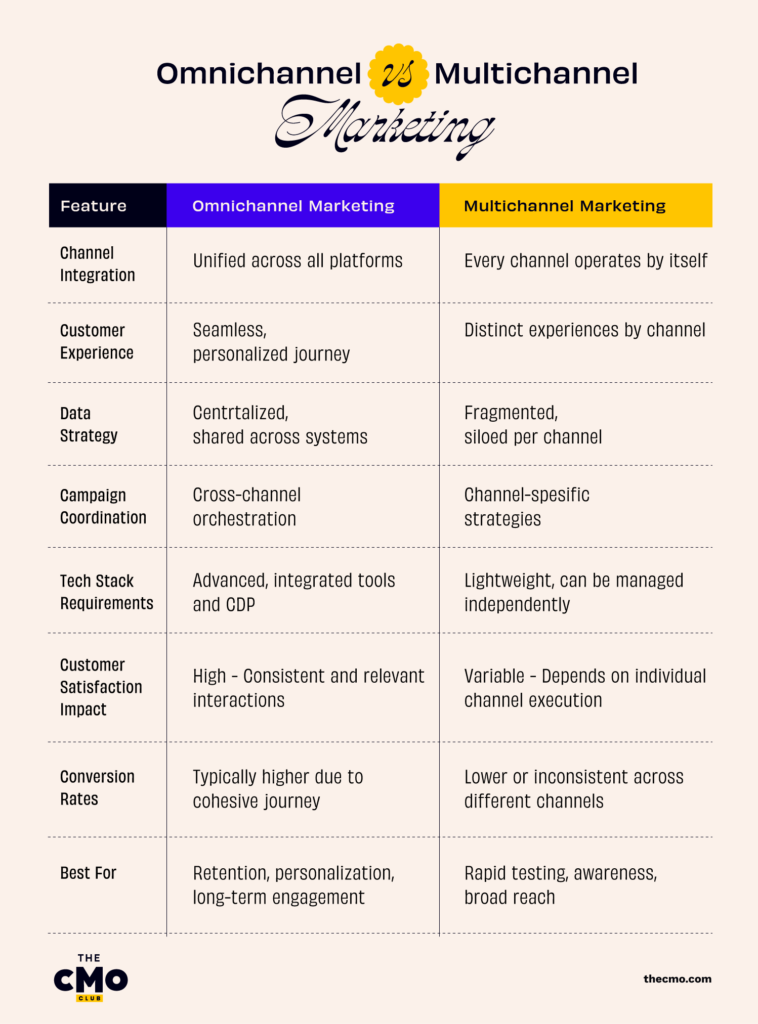
Examples of SaaS Omnichannel Marketing
Gong’s Omnichannel Marketing Strategy
Gong nails the omnichannel by creating a seamless, personalized experience across email, social, product, and support. For example, they may run an email campaign to promote a new feature, targeting power users who have engaged with specific workflows. That email leads to a personalized landing page, which triggers in-app messaging based on whether the user clicked through. That in turn is followed up with a LinkedIn touch if they didn’t. All of this is orchestrated via automation tools stitched into their tech stack, with real-time data flowing between systems.
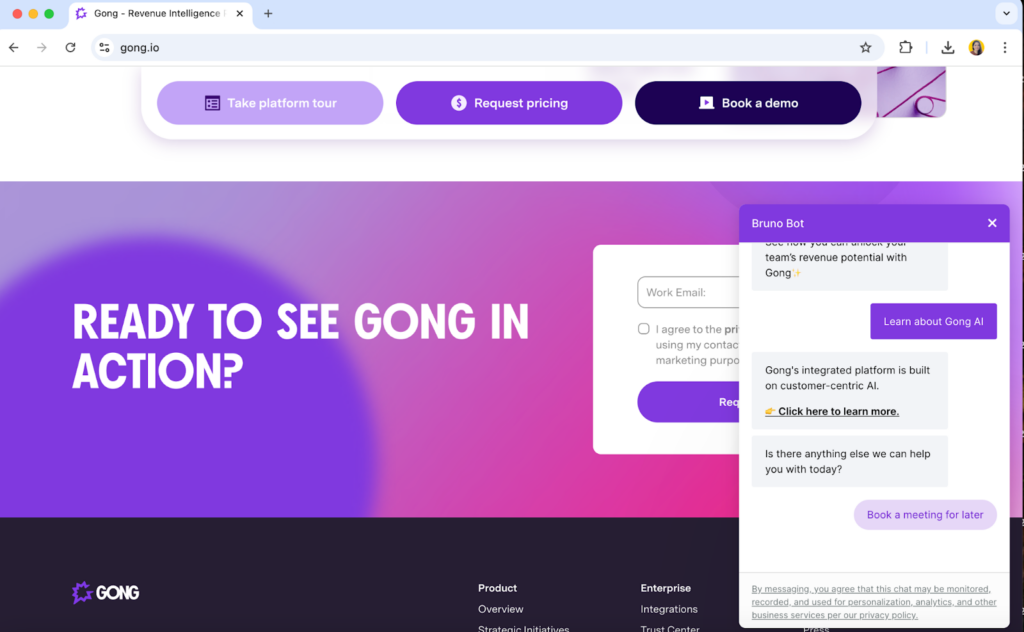

This isn't just marketing theater. It's a tightly integrated customer engagement ecosystem. Gong tracks behaviors, adapts messaging across various channels, and creates a truly seamless experience for each user segment.
HubSpot: Intelligent Omnichannel Orchestration
HubSpot uses its own platform to build deeply integrated journeys across web, email, social, and customer support. For example, a lead downloading an eBook triggers an automated email sequence tailored by persona and funnel stage. If the lead clicks but doesn’t convert, HubSpot retargets them via LinkedIn ads—synced with their CRM behavior.
What makes this strategy work is the automation layered into the tech stack—behavioral data feeds into their CDP, which powers channel-specific personalization at scale. Customer engagement is orchestrated as part of a broader ecosystem that aligns content, timing, and messaging.

Examples of SaaS Multichannel Marketing
Asana’s Multichannel Approach
Asana reaches customers through multiple independent channels including blog content, YouTube videos, email newsletters, and digital ads, each tailored to its platform. While the brand presence is strong across various channels, there’s less continuity in messaging or data sharing between them. Here's a comparison between their blog and the YouTube channel:

Asana’s blog highlights partnerships and announcements targeted to TOFU leads…
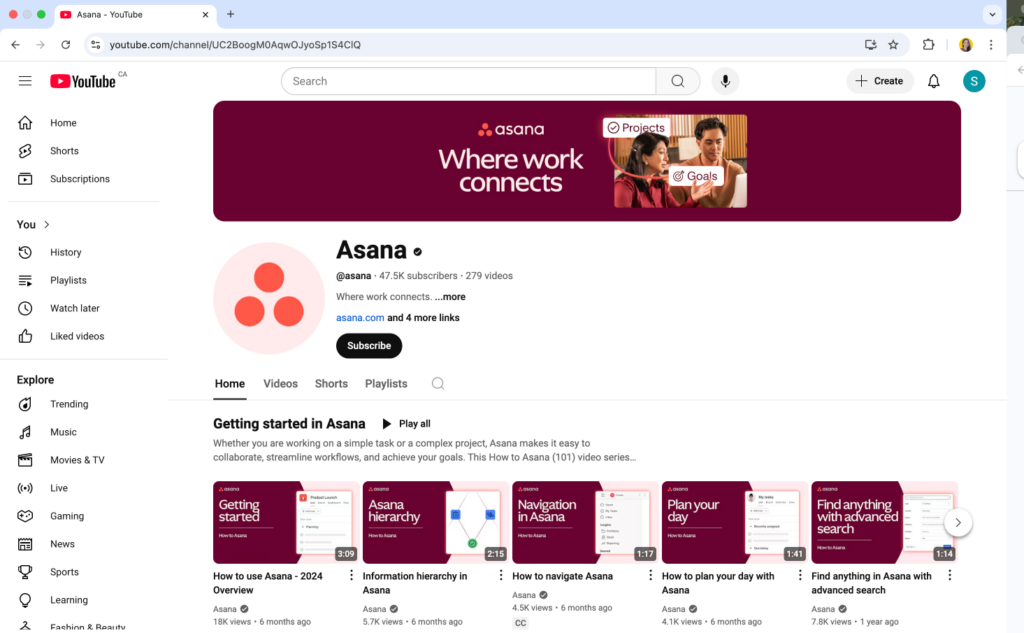
…whereas the Asana YouTube is more geared towards existing users and community engagement.
TestGorilla’s Multichannel Strategy
TestGorilla uses email campaigns, LinkedIn ads, and influencer partnerships to attract different audience segments. Each campaign is optimized for its own channel and target audience but doesn’t necessarily connect to a broader, unified journey.

TestGorilla targets different audiences through landing pages that are specific to them. Here, we see a landing page geared towards BPO companies.
When Should You Use an Omnichannel Approach?
Use omnichannel when you’re optimizing for:
- High-touch customer engagement
- Seamless experience across all touchpoints
- Deep insights into customer behavior
If you’re managing a complex product with long sales cycles or want to reduce churn, omnichannel is the move. It's ideal when your tech stack can support cross-channel automation and your marketing efforts rely on personalization at scale.
It’s especially powerful for the omnichannel customer who moves between mobile, desktop, and even in-store environments, and expects you to keep up.
Example: If you're offering an e-commerce SaaS app, an omnichannel journey might look like this: a customer sees a product via Instagram, adds it to their cart on mobile, receives a cart reminder via email, and completes the purchase on desktop. Every step is connected, showing you understand and anticipate their needs.
When Should You Use a Multichannel Approach?
Choose multichannel when you’re:
- Expanding into new markets
- Testing new platforms
- Managing limited resources
Multichannel helps you reach a broad audience quickly without needing a complex backend. This may work perfectly for early-stage companies or when you want to customize content by platform without building a unified journey. It can also support early customer retention efforts by offering multiple entry points for engagement, even if those experiences aren’t fully connected.
Example: A SaaS startup offering productivity tools might run paid TikTok ads for Gen Z users, publish blog content for SEO, and send email newsletters for updates—all effective, but disconnected. Each channel has a unique purpose for a specific slice of your audience.
Benefits of Omnichannel Marketing
- Higher customer satisfaction: Because omnichannel experiences feel personalized and seamless, customers are more likely to stay loyal and satisfied across the entire lifecycle.
- Improved conversion rates: When customers can move across different channels without friction, they're more likely to complete a purchase or take the desired action.
- Deeper insight into customer behavior: With centralized data and cross-channel tracking, marketers can understand behavior in context — not just by individual channels.
- More effective marketing campaigns: Integrated data enables smarter segmentation, better timing, and more relevant messaging that adapts to each stage of the funnel.
- Consistent brand experience: Your audience experiences your brand as a single, coherent entity instead of a collection of disconnected messages.
Benefits of Multichannel Marketing
- Wider reach across different channels: Multichannel lets you meet customers where they already are, whether that's email, social media, search, or mobile apps.
- Greater flexibility: Because each platform is managed independently, you can tailor marketing campaigns to the unique strengths and behaviors of individual channels.
- Faster Go-to-Market execution: Multichannel campaigns are often easier to launch, allowing teams to test messaging quickly without heavy cross-platform coordination.
- Broader audience targeting: You can speak to different audience segments in channel-native ways, without forcing everyone into the same journey. In fact, communicating through a customer’s preferred channel is extremely important to their buyer’s journey.
- Diversified risk: If one platform doesn't do well, your marketing efforts aren’t derailed. Other channels can still perform well.
Multichannel vs Omnichannel: Final Thoughts
Omnichannel is about depth and consistency. It's designed to deliver a consistent customer experience. Multichannel is about breadth and optionality. Knowing when to use each (and how to evolve from one to the other) is key to serving your target audience, maximizing customer engagement, and building a resilient marketing ecosystem.
Your choice isn’t binary but strategic. And should evolve with your customers, your data, and your tech stack.
Join For More Insights
Did you enjoy this article? Subscribe to The CMO Newsletter for more insights, fresh ideas, and recommendations on the latest and greatest marketing software.

